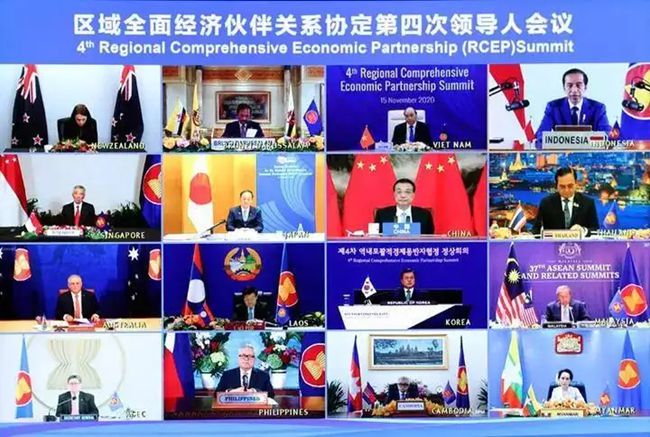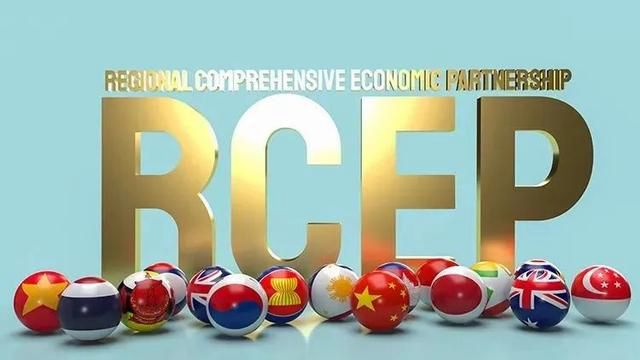From Cambodian rice to Thai perfume coconut, to Vietnamese passion fruit, durian ...... Since the Regional Comprehensive Economic Partnership Agreement (RCEP) came into effect, more and more agricultural products from ASEAN countries are entering the Chinese market more conveniently and enriching the Chinese table. Many ASEAN countries agricultural products business operators said that with the RCEP a series of rules gradually landed, the cost of intra-regional trade significantly reduced, the level of trade facilitation to further enhance, so that they enjoy the benefits of real.
Tariff benefits trade facilitation significantly improved
For agricultural traders in ASEAN countries, a major benefit of the RCEP coming into effect is the reduction in tariffs that brings down import costs and increases export opportunities. Under the agreement, more than 90 percent of intra-regional trade in goods will eventually achieve zero tariffs, which has greatly facilitated cross-border trade flows.
"We no longer worry about export orders as we did before, and the industrial chain adjustment brought by RCEP has helped us to develop more outlets for our agricultural products in the Chinese market." said Nalonsa, a Thai coconut merchant. Narongsa's company has entered the Chinese market since 2013, and sales have increased several times in just a few years, and China has become the main export market for his company's coconut products.

Since this year, Vietnamese passion fruit and durian have been allowed to enter the Chinese market. "This is good news for Vietnam, which has abundant fruit resources." Do Thi Quynh, a lecturer at the Vietnam Banking Institute, said he hoped more Vietnamese agricultural products would be exported to China in the future, giving full play to the complementary advantages of the two countries' resources, making full use of RCEP and pushing bilateral trade relations forward.
"The general reduction of import taxes under RCEP is a great benefit to Cambodia's agricultural development." said Chen Qisheng, General Manager of China Certification & Inspection Group Cambodia Ltd.
Efficient and convenient Cross-border cargo volume increased significantly
From late October, Cambodia's jasmine rice enters the harvest season. Ships loaded with fragrant rice depart from Sihanoukville Port or Phnom Penh Port and arrive at Shekou Port in Shenzhen, China in a week. After the rice is inspected and quarantined by the customs, the 5kg rice can go directly to the retail channel, while the 25kg or 50kg rice in large packages will go to the wholesale sector to supply to the large grain users or be divided by the rice processing enterprises before being put on the market.
China is one of the largest export markets for Cambodian rice. According to the statistics of the Cambodian Rice Federation, Cambodia exported more than 230,000 tons of rice to China in the first 10 months of this year, accounting for nearly half of its total exports.
In recent years, with the promotion of major projects such as the Western Land and Sea New Corridor and the China-Laos Railway, and the improvement of supporting infrastructure such as cold chain and cold storage in the region, it is increasingly convenient for agricultural products from ASEAN countries to enter the Chinese market. Take Thai durian as an example, in addition to entering the Chinese market by air, you can also choose to transport it by land, or by sea from Linchaban Port to Qinzhou Port in Guangxi, China, or Nansha Port in Guangzhou.
Relevant data show that in the first 10 months of this year, the western land and sea new channel iron-sea intermodal transport trains transported a total of 621,026 TEU of goods, an increase of 19.7% year-on-year. At present, the western land and sea new channel iron-sea intermodal transport train transport categories from the initial ceramics, plates and other dozen, increased to more than 640 kinds.
Statistics of China Railway Kunming Bureau Group Co., Ltd. show that as of Nov. 7, the accumulated cargo transported by China-Laos Railway exceeded 10 million tons. Among them, the volume of cross-border cargo transported exceeded 1.8 million tons, and the value of goods exceeded 12 billion RMB. At present, 25 provinces in China have operated international cargo trains of China-Laos Railway, and the cargo transportation has covered Laos, Thailand, Myanmar, Malaysia, Cambodia, Singapore and other countries and regions. The transported goods have expanded from fertilizers and department stores at the initial stage of opening to more than 1,200 kinds of electronics, photovoltaic, cold chain fruits, etc.

Improving quality and efficiency Traditional industry transformation and upgrading
In Narongsa's view, RCEP can drive the shaping and expansion of new industrial forms in the region and promote the transformation and upgrading of traditional industries. He said, "China is our company's largest export market. Now we export not only fresh coconuts, but also coconut jelly and bottled coconut water to China. Today we pay more attention to improving the quality of our products and enhancing our competitiveness."
"In the past, when we planted durian, when to water and fertilize was entirely based on experience, and sometimes we would be chagrined because some trees were not planted ideally." Leong Pui Hin, who runs a durian plantation in Malaysia, said that since his "Sammy Elvis Durian Garden" introduced the "Durian Cloud Platform" jointly built by Ali Cloud and Malaysia's Ricard Limited, through intelligent detection and data analysis, it can more effectively With the introduction of the Durian Cloud Platform, which is jointly developed by AliCloud and Ricard Malaysia, the Durian Plantation can be managed more effectively through intelligent inspection and data analysis, saving costs and increasing production.
Ouyang Jianbin, General Manager of Zhongbao Food Technology (Cambodia) Co., Ltd. said that RCEP helps Chinese agricultural enterprises in Cambodia to build and adjust their industries. From the traditional model of importing and processing raw materials to processing and retrading raw materials in their place of origin, it not only optimizes the regional economic pattern to a certain extent, but also reduces unnecessary losses.

